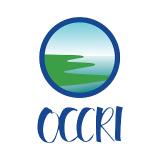Pacific Northwest DEWS April Drought & Climate Outlook Webinar - April 26, 2021
According to the April 20, 2021 U.S. Drought Monitor, 56.6% of the Pacific Northwest Drought Early Warning System (DEWS) is in Moderate Drought (D1). Additionally, a pocket of Exceptional Drought (D4) was added to Oregon, the first time that state has had D4 since 2015. Snow conditions this winter have been good in Washington and northern Oregon, and average to below average throughout the rest of the Pacific Northwest. What's the outlook for the rest of spring into summer? This webinar featured current conditions and climate outlook, as well as presentations on the Fifth Oregon Climate Assessment Report and a demo of the redesigned Drought.gov.
These webinars provide the region's stakeholders and interested parties with timely information on current and developing drought conditions as well as climatic events like El Niño and La Niña. Speakers also discuss the impacts of these conditions on things such as wildfires, floods, disruption to water supply and ecosystems, as well as impacts to affected industries like agriculture, tourism, and public health.





